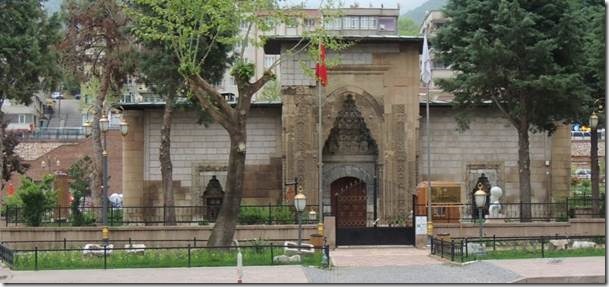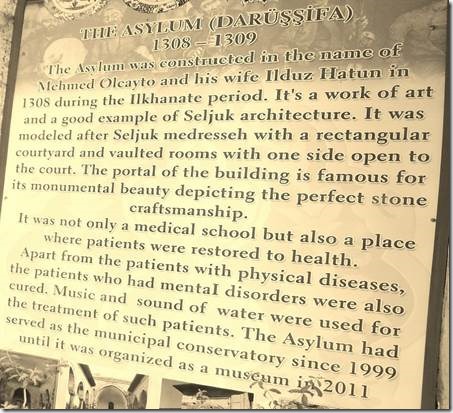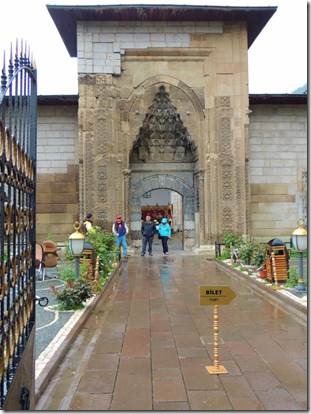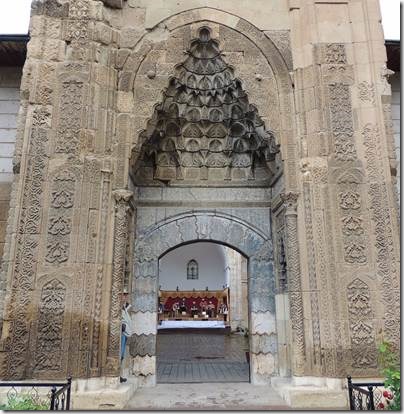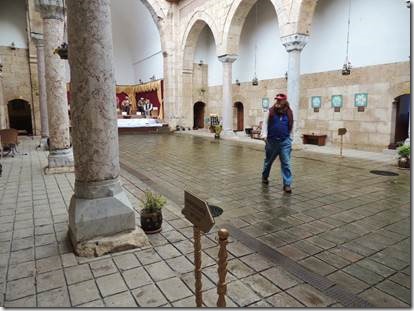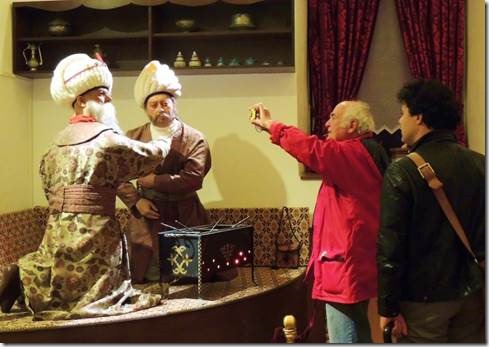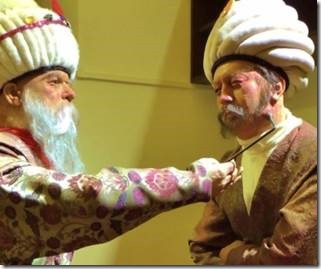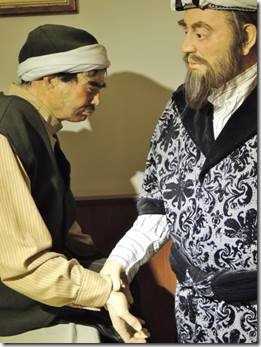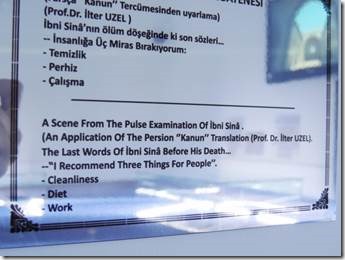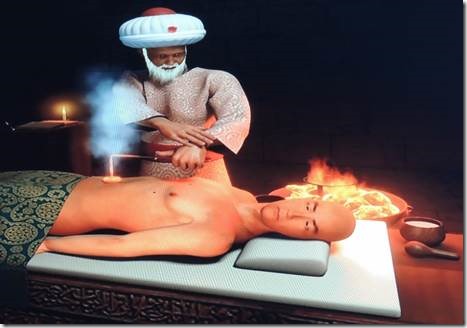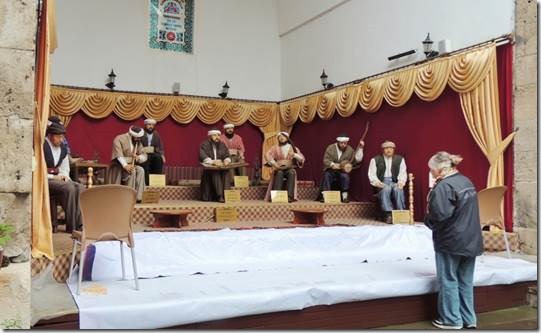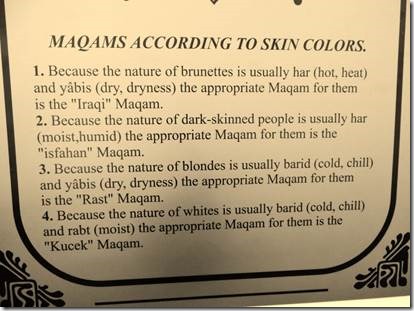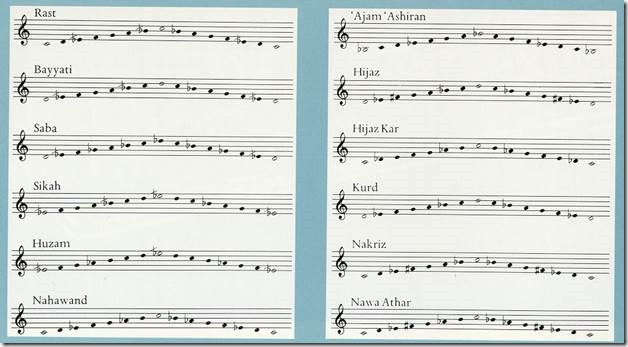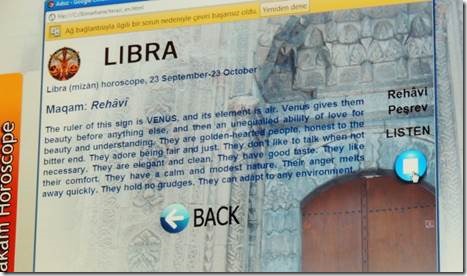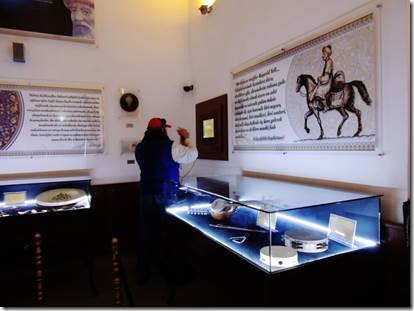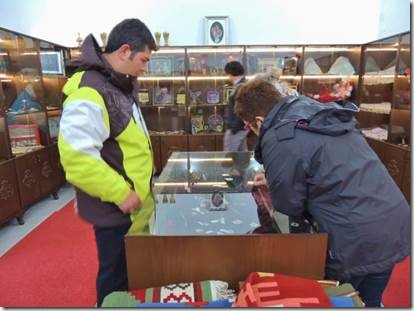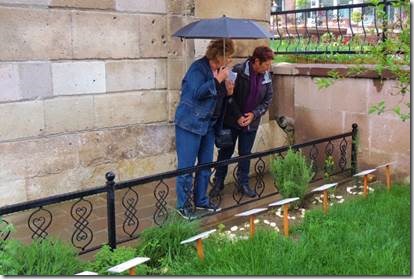Merhaba,
Sabuncuoḡlu History of Medicine and Surgery Museum
I found this place pretty fascinating and realized that I’d walked past it for two mornings without realizing what it was. Amasya has so much to see! A really top spot to visit.
Ru
|
From Mary Lee Settle who visited Turkey in 1989 to write her book Turkish Reflections. “ I went out early in the morning to see the Seljuk mental hospital, built in 1308, and in use until the mid-nineteenth century. As early as the fourteenth century the treatment of mental patients was astonishingly modern. They were not chained or beaten as in Europe. Instead they were talked to, given exercises, sedated by warm water baths, and made calm by music and dancing and sometimes hypnosis. It was 6:30, the sun was new, and the façade of the hospital was a perfection of Seljuk carving: the florets, the twining vines, and a kneeling figure on the keystone of the door. Was it a slave of the local sultan who had had it built in honor of his ruler? I thought that nobody was there and then – I had not even heard him – a smiling boy-man was standing beside me, awkward and helpful, treating the hospital as if it were his own home, and attitude I would find over and over with volunteer guides. He was a natural. They are not isolated in Turkey, but are cared for by their families. Inside the hospital, built in the traditional medrese style, with an iwan – the open lecture hall – on either side and another at the far end, and the patients’ rooms in long colonnades, he took me to room after room, some full of ruble, all empty and forgotten, except, I think by him, who had made it a second home. His brother, or father – I never knew- saw that we had become friends when he came out of the great door; he sent some tea and those huge round sesame-covered rolls, called simit, over to us, and we sat together on the sill of the Seljuk carved window in front of the hospital in the sun and ate our breakfast together. When I tried to pay for it, they both refused. But the boy insisted that I take his picture in front of the Seljuk façade.” |
|
After reading that passage, the hospital was # 1 on my list of places to see in Amasya. We had to wait until Tuesday morning, the day we were leaving Amasya as museums aren’t open on Mondays. It was much changed since Mary Lee Settle’s visit. It is now a museum with displays and a lovely gift shop. We arrived just at opening- at 9 am. Our guide was a young man and he did smile a lot, but he was part of the official museum staff. |
|
Medicine and Surgery Museum |
|
Main hall with rooms leading off to the sides. |
|
Dr. Sabuncuoḡlu and his patient “pose” for David and Taṣ. |
|
That instrument came out of a coal fire so hopefully he’d had something to dull the pain. |
|
Pulse taking…. |
|
When I started researching for this email it was easy to find lots of information on Sabuncuoḡlu in the National Institute of Health which I thought was pretty impressive and a bit more reliable in Wikepedia. |
|
Plast Reconstr Surg. 1997 May;99(6):1775-9. Plastic surgical techniques in the fifteenth century by Serafeddin Sabuncuoğlu. Doğan T, Bayramiçli M, Numanoğlu A. Source Department of Plastic and Reconstructive Surgery, Marmara University School of Medicine, Istanbul, Turkey. Abstract Serafeddin Sabuncuoğlu (A.D. 1385-1468) is the author of the first illustrated surgical textbook in the Turkish-Islamic literature, namely, Cerrahiyet-ül Haniyye (Imperial Surgery). A pioneer in all fields of surgery. Sabuncuoğlu developed numerous original techniques. He was a keen observer and inventor and a prolific writer who combined his fortune with knowledge of his era. He described a mass reduction procedure for the management of gynecomastia, probably one of the first attempts at reduction mammaplasty. He gave detailed descriptions of different eyelid pathologies and their surgical managements. The aim of this study is to investigate the contributions of this remarkable pioneer to the field of plastic surgery. PMID: 9145157 [PubMed – indexed for MEDLINE] http://www.ncbi.nlm.nih.gov/pubmed/9145157 Color illustrations and neurosurgical techniques of Serefeddin Sabuncuoğlu in the 15th century. Elmaci I. Source Department of Neurosurgery, Marmara University School of Medicine, Istanbul, Turkey Abstract Serefeddin Sabuncuoğlu (AD 1385-1468?) is the author of Cerrahiyyetü’l-Haniyye (Imperial Surgery), which was written in Turkish in 1465. It was the first illustrated textbook of surgery in the Turkish medical literature, containing color illustrations of surgical procedures, incisions, and instruments. Sabuncuoğlu, a pioneer of surgery, developed numerous original techniques in a variety of surgical specialties. He described surgical management of spinal trauma, epilepsy, migraine, facial palsy, hemiplegia, low back pain, cranial fracture, and hydrocephalus. The aim of this study is to describe his contributions to neurosurgery. http://www.ncbi.nlm.nih.gov/pubmed/11014435 Orthopaedic techniques of Sabuncuoğlu in the 15th century Ottoman period. Sarban S, Aksoy S, Uzel I, Işikan UE, Atik S. Source Department of Orthopaedic Surgery, Harran University Faculty of Medicine, Sanliurfa, Turkey. sezginsarban@harran.edu.tr Abstract Serefeddin Sabuncuoğlu (1385-1468) was the author of the surgical textbook Cerrahiyyetü’l-Haniyye (Imperial Surgery). It was the first illustrated surgical textbook in the Turkish-Islamic medical literature. Cerrahiyyetü’l-Haniyye is significant because it includes Sabuncuoğlu’s color illustrations of surgical procedures, incisions, fracture dislocation reduction techniques, and instruments. There are only three handwritten copies. Two originally were written by Sabuncuoğlu and are exhibited in Paris and Istanbul. The book was rediscovered in 1936, but some parts are suspected to be missing. The book currently consists of three chapters divided into 193 sections. The third chapter includes orthopaedics and traumatology, reduction techniques of lower and upper extremities, fractures and dislocations, and relevant Greek, Arabic, and Persian textbooks are cited. Sabuncuoğlu also wrote about surgical treatment of congenital hand anomalies. He was the first to advise placing a wooden splint under the palmar side after hand surgery. We reviewed the sections of Cerrahiyyetü’l-Haniyye related to orthopaedics and traumatology. Compared with previous writings by Hippocrates, Ibn-i Sina, and Al-Zahrawi, there are no major differences in the treatment of fracture dislocations. |
|
Lots of cauterization was done to treat many different illnesses with medicinal plants used as anesthesia: this was taken from the animation shown in one of the rooms . “ Serafettin Sabuncuoglu discusses operational anesthesia in his text as follows: ”Some patients might be able to resist incisions and cauterization, while others might not. Therefore, narcotic medicine called murkid is necessary to prepare when needed, so that the operation might be possible. Take and cut the fresh parts of Luffah (mandragora), pound and mix it with almond oil and let it stay for a day and night. Then, the surgeon who wants to use it must give one drachm of it to be eaten before meal. A little later you’ll see that the patient will lie down and fall asleep without perceiving you. Then, practice whatever treatment you want to do. Give one drachm (dirhem = dram = 4 g) of it to the adult, but administer only the amount needed for children, so that no malpractice occurs. This is the narcotic I used all through my life and did not need any other anesthetic medicine.” http://www.anesthesia-analgesia.org/content/102/4/1289.1.full |
|
Music therapy exhibit |
|
http://www.turath.org/ProfilesMenu.htm explains that Maqams are different Arabic melodies. |
|
I’m a Libra so listened to my Rehavi makam. Rehavi makam: effective at pre-dawn. Hüseyni makam: effective at dawn. Rast makam: effective in early morning. Buselik makam: effective in mid morning. Zirgüle makam: effective toward noon. Uşşak makam: effective at noon. Hicaz makam: effective in the afternoon. Irak makam: effective in late afternoon. Isfahan makam: effective at dusk. Neva makam: effective in the evening. Büzürk makam: effective in late evening. Zirefkend makam: effective during the time of sleep. The great Islamic thinker and philosopher Ibn Sina (980-1037 http://www.turkishmusicportal.org/article.php?id=12&lang2=en |
|
Some of the instruments |
|
Finally, of course, a look in the gift shop where lots of us bought a few things |
|
Medicinal plants and herbs We weren’t as lucky with the weather as Mary Lee Settle had been: but it was only a light drizzle. |
|
Our next stop was a small museum in Amasya where I saw my first mummy! Next email. |

